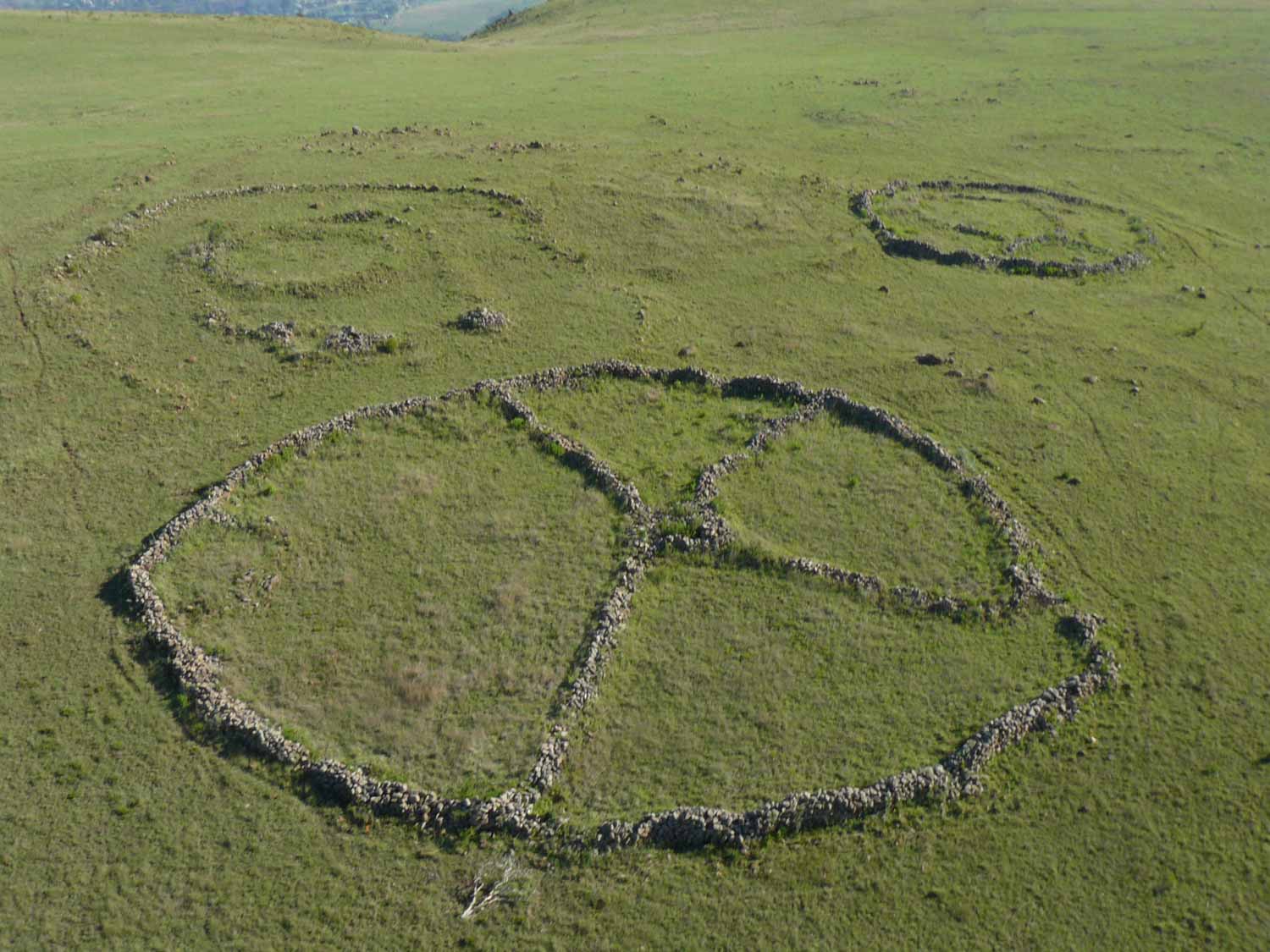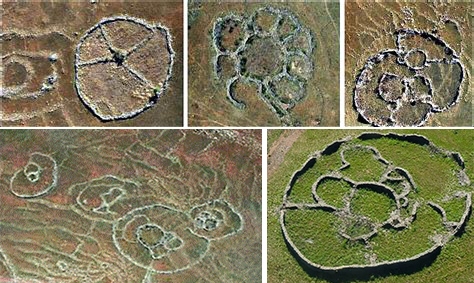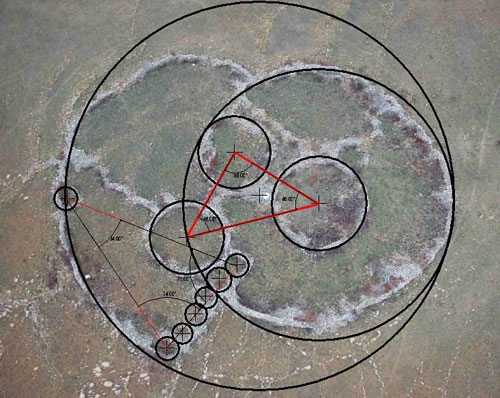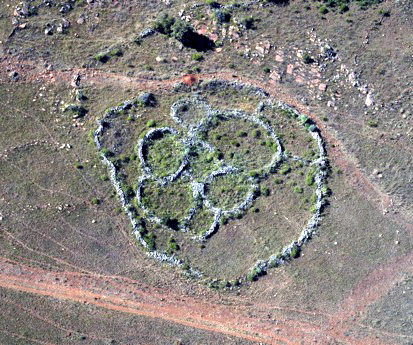The South African Stone Circles

The South African stone circles are round megalithic structures that are scattered through the South African territory.
The first estimate of the ruins was made in 1891 by English explorer Theodore Bent when he estimated there were about 4,000 circles. By 1974 the estimate had risen to 20,000.
Today, researcher and authority on the subject, Michael Tellinger, has estimated the number of ancient stone ruins to be 100,000 or possibly much higher.
These structures also have strong electromagnetic fields, capable of generating powerful toroidal fields. It’s because of this peculiarity that Dr.Michael Tellinger decided to study some of them with a scientific approach. You can read more on his blog here.
About 280 km west of the port of Maputo, the capital of Mozambique, the remains of a large metropolis were discovered.
According to conservative estimates, they occupied an area of about 5,000 square km.
It was part of an even larger community, about 35,000 square kilometers, dating back to a period ranging from 75,000 to 160,000 BCE.
The thousand gold mines discovered over the last 500 years indicate a vanished civilization that has lived by digging for gold in this part of the world for thousands of years.
If this region is really the cradle of mankind, we are likely analyzing the activities of the oldest civilization on Earth.
When the first explorers encountered these ruins, they took for granted that they were cattle pens made by nomadic tribes, such as the Bantu people, who moved south and settled in this land around the 13th century.
There never was historical evidence of any previous, more ancient civilization, capable of constituting such a densely populated community, and little effort was made to investigate the site as the historical location of the ruins was not known at all.
The situation changed when researcher Michael Tellinger took care of it, in collaboration with Johan Heine, a local firefighter, and pilot who had observed these ruins over the years, flying over the region.
Heine had the unique advantage of seeing the number and scale of these strange stone foundations and knew their significance was not appreciated.
In recent years, these enigmatic stone formations have been promoted, along with the Bosnian pyramids, as the oldest human structures on the planet.
They can only be truly appreciated from the sky or through satellite imagery.

Many of them are almost completely eroded or have been covered by the movements of the soil made for agriculture over time.
Some have survived well enough to reveal their large size, with some original walls standing up to nearly 2 meters high and over a meter wide in some places.
Looking at the entire metropolis, it becomes clear that it was a well-designed community, developed by an evolved civilization since the stone circles also seem to have been built according to geometric proportions.

The number of ancient gold mines suggests the reason why the community was in this position.
Some roads extend for about 500 kilometers and connected the various communities based on agriculture to terraces very similar to those found in the Inca settlements in Peru.
A rough calculation indicates that the original roads would have required the use of more than 500 million stones between 10 and 50 kilograms each.
The highlight of the area is undoubtedly the so-called “Adam’s Calendar“.
The discovery of Heine has opened a real Pandora’s box, allowing the discovery of numerous stone settlements that represent a fascinating and enigmatic new chapter for contemporary archeology.
It is estimated that there are over 20,000 ancient stone ruins scattered across the mountains of South Africa.
Archaeologists and anthropologists speculate on the origin of the mysterious ruins, often labeling them as ‘material of little importance’ and boycotting them.
While the most attentive and possible part of the scientific community glimpses a completely new and surprising picture of the ancient history of African ruins and on the history of man in general.
This finding is in clear contradiction with traditional historiography which inexplicably insists on teaching that the most important and impressive civilizations appeared in Sumer and Egypt and that there was nothing before them.
The truth is that very little is known about these spectacular ancient ruins and that sadly many of them have been destroyed by sheer ignorance by forestry, farmers, and urban development.
It is clear that this immediately poses a huge problem for archaeologists, anthropologists, and historians, given that the beginning of the history of human civilization is commonly placed no later than 12,000 years ago, with the birth of agriculture.
And it becomes even more complex when you realize that these are not simply isolated structures left by the migration of hordes of hunt-gatherers, but real astronomical observatories and temples of an ancient lost civilization that dates back many thousands of years.

